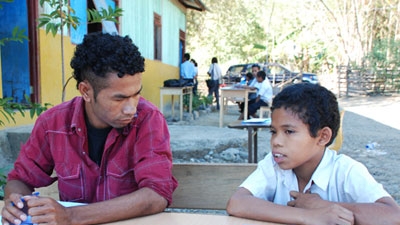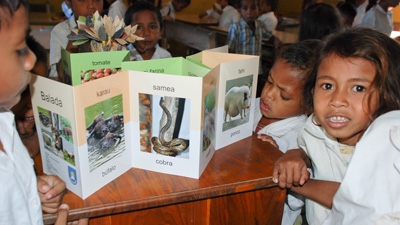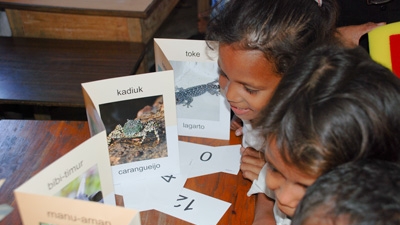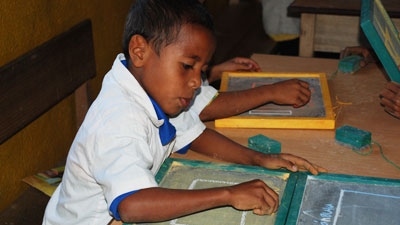Challenge
Timor-Leste’s ten years of independence have been marked by both progress and conflicts. At independence, many schools had been destroyed and there were also severe shortages of teachers. There were immediate challenges in reconstructing essential infrastructure, to ensure children could get to a school, along with recruitment and training of teachers and other education professionals. Meanwhile, rapid population growth created additional pressure for the government to provide a quality education system for future generations. The government is committed to ensuring that children are not only going to school, but that they are learning effectively.
Solution
The Education Sector Support Project (ESSP) was designed to support government’s effort to advance progress in the education sector by:
- Strengthening the capacity of the Ministry of Education to develop, design, plan and implement an effective education policy
- Supporting the Ministry to provide critical learning materials, such as textbooks and reading tools, that would help children learn to read and write
- Constructing and rehabilitating 2,100 classrooms, which would add new places for more than 65,000 students
- Addressing youth-related skills development opportunities to increase job prospects and opportunities, through training more teachers in technical and vocational fields
- Supporting the design and implementation of the Escola Basica school organization model, including through the training of inspectors, school directors, deputies and school board members in 250 schools
- Supporting policy design and building professional skills for effective early childhood development.





